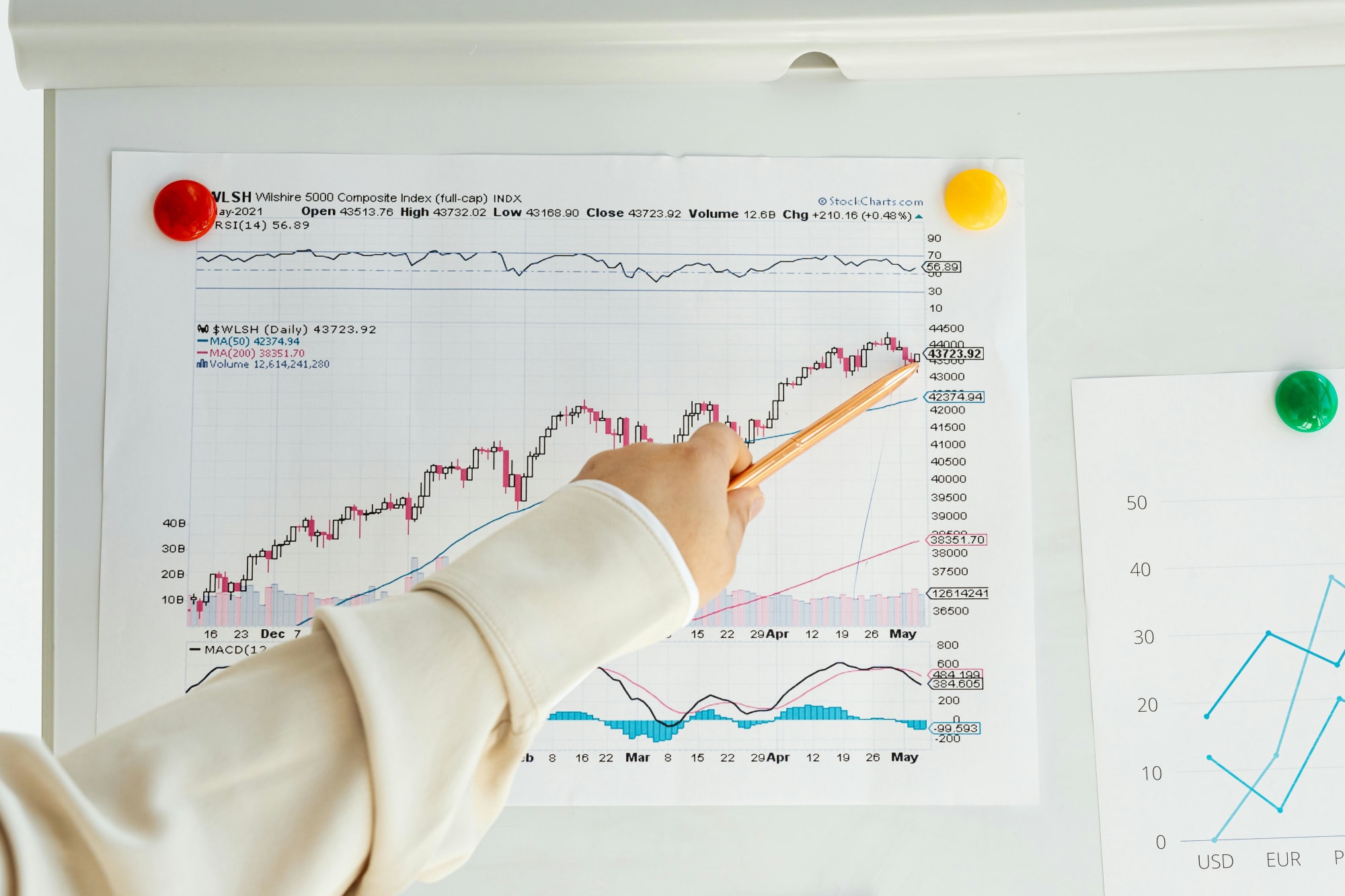Invest
5 questions for the RBA in 2020
It’s been a tumultuous 12 months since the Reserve Bank of Australia (RBA) began cutting rates in response to an economic downturn, so what’s on the horizon for the coming year? A portfolio manager has weighed in.
5 questions for the RBA in 2020
It’s been a tumultuous 12 months since the Reserve Bank of Australia (RBA) began cutting rates in response to an economic downturn, so what’s on the horizon for the coming year? A portfolio manager has weighed in.

In a new outlook paper from Nikko Asset Management portfolio manager Chris Rands, the expert has proposed five questions for the RBA that will need to be answered by the central bank over the next 12 months.
Here are the questions Mr Rands has pitched, and how he believes the central bank could or should be responding.
Question one: How should the RBA respond to change in the outlook for house prices?
According to the portfolio manager, the RBA will need to decide whether current market strength means that they should slow down their policy action or determine that the economy is weak enough to warrant stoking further appreciations.

When the central bank began cutting rates in 2019, “the house price outlook was vastly different than today”.
Fifteen months of consecutive declines were flowing through the economy, to soft retail sales, falling residential building approvals and weak inflation.
However, since the first cut in 2019, “the housing trajectory has turned on a dime”.
It has led Mr Rands to consider that “this improved housing outlook for 2020, compared to the beginning of 2019, has the potential to create the ‘gentle turning’ point the RBA has spoken of”.
At a minimum, he believes that the recent increases to housing prices “should give the RBA room to pause, waiting a few months to confirm whether the data is improving before throwing more fuel onto the housing market”.
Question two: How strong will inflation and unemployment be in 2020?
The portfolio manager said there are signs around inflation and unemployment that the market is being “more pessimistic” than the data necessarily indicates.
Inflation has been forecast to rise back up to 2 per cent, while the unemployment rate is seeing stabilisation.
Mr Rands said, “We find it hard to understand just why the RBA would want to be any more aggressive on the cash rate than it has in the past.”
He considered expectations on the RBA to deliver five total interest rate cuts – three already plus a further two as urged on by the market – as well as a kickstarting of quantitative easing (QE) seems as “a bridge too far unless these conditions change”.
Mr Rands summarised his comments as follows: “Simply speaking, the RBA’s goal is to achieve full employment and stable prices, both of which are arguably close to being realised.”
Question three: Is global trade set to improve?
While 2019 proved to be a relatively weak year for global trade, Mr Rands has pointed to some tentative signs that this could be slightly more positive in 2020.
The portfolio manager pointed to rising Chinese imports, increasing new export orders and the increase of exports in key Asian economies as evidence of improved strength.
“If this is true, the Australian economy should benefit,” Mr Rands offered, and would in turn give the RBA less urgency to move rates.
While this could be over-optimistic considering the current coronavirus outbreak, he indicated that the RBA “should have at least tepid optimism compared to September 2019 when the Chinese trade war was accelerating”.
Question four: Where is the tail risk?
For Mr Rands, “the past two years have shown that geopolitical risks seem to be coming faster and [are] more common than previously seen”.
The effect is likely weighing on global growth and potentially hurting economy optimism, he expressed.
And while we can’t forecast geopolitical unknowns, the manager said, “There is enough known geopolitical risk sitting on the horizon that it could lead the RBA to be more dovish than would otherwise be the case.”
Acknowledging the RBA as having “a strong reason to be concerned”, Mr Rands considered that while not yet meaning Australia does require easier rates, “the increase and frequency of geopolitical risks means it can be hard to feel completely comfortable in a neutral cash rate view”.
Question five: How will the RBA respond to the recent bushfires?
According to the portfolio manager, the short-term effect of Australia’s recent bushfire crisis is that GDP will be slower.
“But this usually rebounds in the medium term,” he offered.
Mr Rands expressed a belief that the RBA should be looking through the effects of the recent fires, but the onus should not rest solely on the bank for economic stimulation in this respect.
“We think that it would be more appropriate for a fiscal response to natural disaster,” he said, especially with future forecasts showing hotter weather and more frequent disaster events.
As a result, “we do not believe it should be the RBA’s responsibility to form policy on that basis”, he concluded.
Overall, Mr Rands is of the belief that there is a “higher probability that the RBA will be able to remain on hold this year, rather than cut rates”.
And while the views he has expressed are more optimistic than that of the wider market, he also does not realistically think rates will be hiked across 2020 either.
About the author

About the author


Economy
RBA's hawkish stance reflects inflation concerns, State Street economist comments
In a recent statement, the Reserve Bank of Australia (RBA) has signaled a hawkish stance on interest rates, drawing insights from financial experts about the implications for Australia's economic ...Read more

Economy
Navigating the inflation maze: How CFOs can outsmart economic hurdles in Australia
Fresh inflation data have cooled expectations of near-term rate cuts in Australia, intensifying pressure on margins, capital allocation and demand. Rather than wait for monetary relief that may not ...Read more

Economy
Inflation concerns rise as Australia's CPI climbs to 3.8% in October
Australia's latest Consumer Price Index (CPI) figures have sent ripples through the economy, with headline inflation accelerating to 3.8% year-on-year in October, up from 3.6% in September. The data, ...Read more

Economy
October CPI results pose challenges for RBA’s monetary policy stance
In a surprising turn of events, the October Consumer Price Index (CPI) data has raised eyebrows among economists and market strategists, revealing stronger-than-expected inflationary pressures in ...Read more

Economy
Global deal activity declines by 6% amid economic uncertainty, reports GlobalData
In a year characterised by economic turbulence and evolving market conditions, global deal activity has witnessed a notable downturn during the first ten months of 2025. According to GlobalData, a ...Read more

Economy
Australia’s softening labour market puts another RBA cut in play — here’s what business should do now
A four-year high in unemployment has revived expectations the Reserve Bank could deliver another rate cut as soon as November. With quarterly GDP growth running at 0.6 per cent and annual growth at ...Read more

Economy
Rising CPI reinforces RBA’s stance as rate cut expectations remain: State Street
State Street Global Advisors says the Reserve Bank of Australia (RBA) is likely to hold its current policy outlook following the release of September quarter inflation data, which showed an unexpected ...Read more

Economy
NSW SES boosts tsunami preparedness ahead of World Tsunami Awareness Day
As World Tsunami Awareness Day approaches on 5 November, the New South Wales State Emergency Service (NSW SES) is ramping up efforts to enhance tsunami preparedness along the east coastRead more

Economy
RBA's hawkish stance reflects inflation concerns, State Street economist comments
In a recent statement, the Reserve Bank of Australia (RBA) has signaled a hawkish stance on interest rates, drawing insights from financial experts about the implications for Australia's economic ...Read more

Economy
Navigating the inflation maze: How CFOs can outsmart economic hurdles in Australia
Fresh inflation data have cooled expectations of near-term rate cuts in Australia, intensifying pressure on margins, capital allocation and demand. Rather than wait for monetary relief that may not ...Read more

Economy
Inflation concerns rise as Australia's CPI climbs to 3.8% in October
Australia's latest Consumer Price Index (CPI) figures have sent ripples through the economy, with headline inflation accelerating to 3.8% year-on-year in October, up from 3.6% in September. The data, ...Read more

Economy
October CPI results pose challenges for RBA’s monetary policy stance
In a surprising turn of events, the October Consumer Price Index (CPI) data has raised eyebrows among economists and market strategists, revealing stronger-than-expected inflationary pressures in ...Read more

Economy
Global deal activity declines by 6% amid economic uncertainty, reports GlobalData
In a year characterised by economic turbulence and evolving market conditions, global deal activity has witnessed a notable downturn during the first ten months of 2025. According to GlobalData, a ...Read more

Economy
Australia’s softening labour market puts another RBA cut in play — here’s what business should do now
A four-year high in unemployment has revived expectations the Reserve Bank could deliver another rate cut as soon as November. With quarterly GDP growth running at 0.6 per cent and annual growth at ...Read more

Economy
Rising CPI reinforces RBA’s stance as rate cut expectations remain: State Street
State Street Global Advisors says the Reserve Bank of Australia (RBA) is likely to hold its current policy outlook following the release of September quarter inflation data, which showed an unexpected ...Read more

Economy
NSW SES boosts tsunami preparedness ahead of World Tsunami Awareness Day
As World Tsunami Awareness Day approaches on 5 November, the New South Wales State Emergency Service (NSW SES) is ramping up efforts to enhance tsunami preparedness along the east coastRead more








